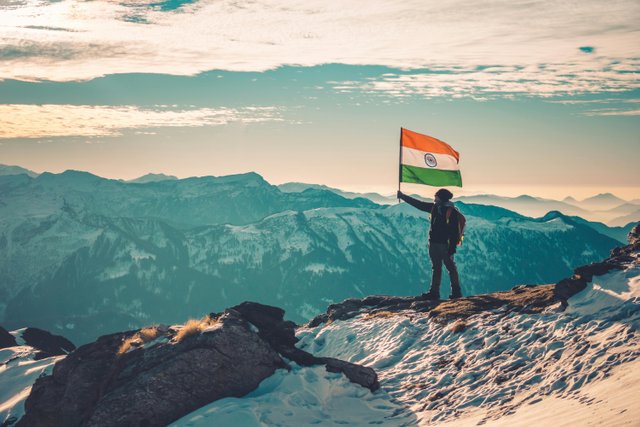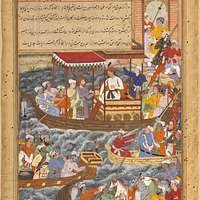Greetings my dear friends of Steemit and STEEM INDONESIA
“The State of our conception must be a secular, democratic state.” Mahatma Gandhi, 31 August 1947.
Democracy becomes difficult in countries with vast Ethnic and Religious diversity. So secularism and democracy moved hand in hand which is strengthening sovereignty and integrity continuously.
Consociational Democracy is a stable democratic system in deeply divided societies that is based on power sharing between elites from different Social Groups.
With the strengthening of Democracy in India, people have developed the ability to hold 2-3 Identities.
Caste and gender differences still existed in India.
Initially key measure emphasizes implementation of:
Conservative Democracy
Democratisation of Democracy
Ethnic Democracy
Liberal democracy was not fully supported in the beginning.
The most democratic grief of India was emergency imposed by Indira Gandhi in 1975.
The first non-congress government was formed in 1977.
The dominance of the upper caste in government started to decrease during 1989-91.
The LPG reforms of 1991 also strengthened democracy in India. Liberalism, Privatisation and globalization policy help India overcome economic crisis.
Homosexuality was decriminalised in India in 2018.
67% voting percentage during the 2019 general election was highest in the country till the date.
One party system in India ended completely in the 1990s.
Digitization played a significant role in making Indian democracy transparent in the 21st century. Digitization helps in access to free and transparent data and information.
Indian democracy has been further strengthened over time.
India is the world's largest democracy.
 The Statesman Newspaper 15.08.1947.
The Statesman Newspaper 15.08.1947.
Secularism
We, the people of India, have solemnly resolved to constitute India into a Sovereign, Socialist, Secular, Democratic Republic.
The constitution Preamble declares India to be a sovereign, socialist, secular and democratic republic.
The word secular was added in the constitution by the 42nd Amendment Act of 1976.
Mini Constitution of INDIA
42nd Amendment Act, 1976
Act Passed by the Parliament on 11th November 1976
Three new words SOCIALIST, SECULAR, INTEGRITY were added. Fundamental Duties by the Citizens (new Part IV A) was also added.
Secularism in India
HINDUISM ॐ
JAINISM
BUDDHISM
SIKHISM
ISLAM
The origin of the concept of secularism can be traced to the political conditions of the eighteen centuries in the European State.
Western Society
Western society considered religion a private affair while the government, a public body.
Due to interference from the Church, the whole European society reached the Dark Ages.
Indian secularism is a positive concept. It allows religions and beliefs to coexist peacefully without interfering in their affairs.
The issue of Punjabi suba movement and Shah Bano etc have raised questions over the practice of secularism in India.
The verdict over Babri Mosque and Hijab ban also led to questions over the Government and their representatives.
Article 25 of the Indian constitution assumes religions like Buddhism, Jainism, Sikhism, a part of Hindu religious groups.
Indian Constitution
Article 16
Right to equality in public employment.
Deprives Dalits of their right to religious freedom.
As per the presidential orders of 1950 and 1956, Hindu, Sikh and Buddhist can only take benefits of the scheduled caste reservation.
Some people also see it as favoring Hinduism and negatively affecting the choice of Muslims or conversion to the Christian religion of a citizen.
The Janata Party government passed the 44th Amendment Act to "restore the Constitution to the condition it was in before the Emergency"
Despite these, the changes brought by the 42nd Amendment Act to the Preamble were not amended by the 44th CAA.
Article 29 and 30 of the Indian constitution provides for positive discrimination to protect minority rights.
This can be seen from the beginning of Civilization in India. If we look at the history of India, we will see that from the Vedic era to the Mughal period, India was ruled by different dynasties and emperors. Religion remained a dynamic concept in Indian society. The Upanishads also talk about Ekam Sat Vipra Bahudha Vadanti, meaning, God is one, the enlightened or the wise, call him by different names. Ashoka also talked about religious toleration and mutual respect towards religions in his 12th Rock edict.
The whole of Europe seems to be divided into different countries only on the basis of language; whereas India has always stood united even after languages and so many religions, cultures and sects.
Before I conclude I would like to invite three fellow Steemians to participate in the contest
@zulbahri
@eveetim
@georgitsachev
Thank you for reading my post.


Hi @impersonal thank you for your contribution to the My Great Country part-02 contest held in the Steem Indonesia Community.
We have also sent a prize to your account as the sole winner of the contest in the form of 3 Steem in the form of steempower.
Hope you have a nice day.
Downvoting a post can decrease pending rewards and make it less visible. Common reasons:
Submit
Thank you for the consideration. Hope you will continue to host the nice contest.
Downvoting a post can decrease pending rewards and make it less visible. Common reasons:
Submit
X Link
https://x.com/Saha_tweet/status/1891126463904002246
Downvoting a post can decrease pending rewards and make it less visible. Common reasons:
Submit
Downvoting a post can decrease pending rewards and make it less visible. Common reasons:
Submit
Thanks for the encouraging support.
Downvoting a post can decrease pending rewards and make it less visible. Common reasons:
Submit